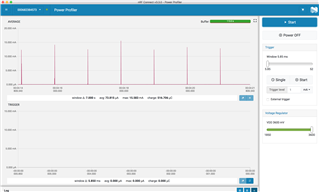Hello Support Engineers,
I have observed some interesting behaviour on my custom board vs the DK. In the DK, the current spikes is very even and steady around 10mA. However, on my board, the current spikes seems to be all over the place. Both are equipped with the Low frequency clock, external 10uH and 15nH inductor for DCDC.
I should also mentioned that in my custom board, I have another Ti DCDC convertor that that drops the input 3.6VDC from the PPK to 2.8V DC for feeding the Nrf52832. and I compare that to the DK tuning at 2.8V, set from the PPK.
Please see the attached screen capture of the PPK. The current is measured at the input of the Ti DCDC convertor. Is it something I need to worry about?
Best Regards,
Nelson



